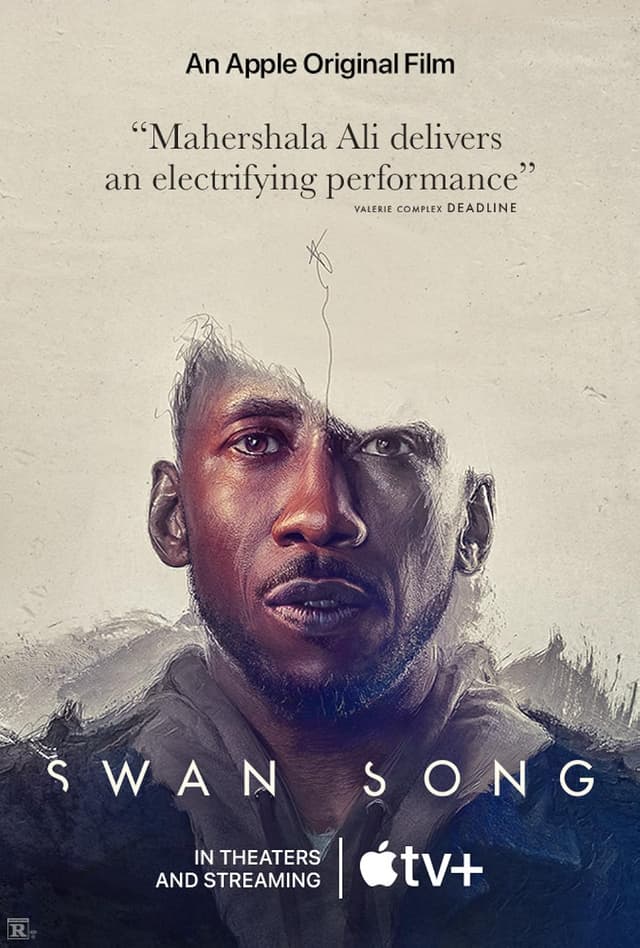John LePore | June 28, 2023
The Blue Hologram Edition
On HUDs, GUIs, and Hollywood's addition to glowing blue shit
Recommended Products

A film that does an especially good job of depicting a world seen through AR contact lenses.
John LePore (JL) is a creative consultant designing the future for film, technology and automotive.
John here. You watch the latest blockbuster, and you see a familiar, almost comforting sight. A highly-trained operative in the inner sanctum of a slick HQ is about to debrief the main characters (and you, the viewer). Do they hand out print-outs, fire up a 4K projector, or share a Google doc? No. They activate a hologram. The hologram rises out of the conference table, or a wristwatch, or just fills the entire room. You know this; you’ve seen it. And because it is holographic technology, it looks just like the other holograms—it’s glowing blue.
The glowing blue hologram is now ubiquitous across the film landscape: sci-fi or espionage, distant future or present-day, Marvel or DC. It’s a paradigm so familiar, we can imagine it with our eyes closed.
Why is this interesting?
Holograms, as depicted on film, do not exist. This is not something we experience in our present reality. So in fiction, where advanced technology could be anything, why is it almost always glowing blue shit?
I typically point to Star Wars' hologram of Princess Leia: "Help me Obi-Wan Kenobi, you’re my only hope…". Created in 1977, this was the first truly iconic hologram seen on film. This element blended the visual language of an analog film projector’s beam of light, with static and flicker seen in cathode ray televisions. The design was clever and well executed within the film, but the film's legacy and cultural impact has made that image persistent, and familiar.
Since 1977 the greater film-going audience has come to accept that glowing blue projections are a technological paradigm.
Familiarity is a powerful tool, increasing comprehension of radical concepts. If some part of it is familiar, other parts can be more extreme. This is why a lot of past future-visions have obvious hallmarks of the period in which they were created (like a Buck Rogers supercomputer with reel-to-reel tape). This is also why this fictional tech is often loaded with glitches, flickers, and static. The imperfections ground the concepts and make the implausible more plausible.
And while you could describe the glowing blue hologram pejoratively as a trope, its tropey-ness is of tremendous value to filmmakers and screenwriters. The moment it is on-screen, the audience accepts this concept. They associate it with its history—blue holograms are from the future, or harnessed by the most technologically savvy.
While infinitely useful for displaying plot points and context in film, the cinematic hologram won’t be real anytime soon. We will likely have ubiquitous AR or some kind of shared spatial ecosystem long before we have useful light-projected holograms. AR today can already genuinely create “holographic-like” effects. In 2015 when revealing their AR product, Microsoft depended on the fictional concept of the sci-fi hologram rather than name their device “Microsoft Augmento Reali-Lens.”
So why isn’t sci-fi loaded with Augmented Reality? Well, for one thing, it’s quite difficult for a camera to see what’s happening within a headset. Add to that that technological feasibility isn’t a determining factor in fiction, and it would seem that AR isn’t quite ready for Hollywood… Or is it?
Marketing for Apple's Vision Pro (and, to be fair, most other AR headsets), depicts a lot of scenes from outside of the user’s field of view. It’s a surprisingly natural take on "this is what AR feels like”—seeing a human immersed amongst virtual elements. Film can do the same: the 2021 film Swan Song does an especially good job of depicting a world scene through AR contact lenses.
I expect we'll continue to see this normalized in movies, not unlike on-screen text messages. "Virtual" elements will be incorporated into scenes and narratives with little to no explanation, and the audience will accept these previously abstract concepts more easily.
The most important impact mainstream AR will have on the zeitgeist of glowing blue holograms? Well, they are going to feel increasingly pedestrian. Filmmakers and their collaborators will have to take bigger leaps in imagining new technologies. Reality is about to blow past one of fiction’s favorite tech tropes.
This is a particularly critical evolution—from Jules Verne’s Submarine to Star Trek Communicators, science-fiction has always inspired science-fact. Today’s creatives have the power to inspire tomorrow’s engineers, and it’s going to take some impossible-to-imagine innovations.
Our collective vision of the future depends on it! (JL)
Quick Links:
HUDS+GUIs is a great resource that keeps up with fictional technologies and how they are presented in film. Would you believe, this is now a cottage industry with several studios dedicated to the design & implementation of these concepts.
Pushing Pixels includes a series of interviews with various artists who are creating these concepts seen in film, television and gaming.
—
Thanks for reading,
Noah (NRB) & Colin (CJN) & John (JL)
—
Why is this interesting? is a daily email from Noah Brier & Colin Nagy (and friends!) about interesting things. If you’ve enjoyed this edition, please consider forwarding it to a friend. If you’re reading it for the first time, consider subscribing.